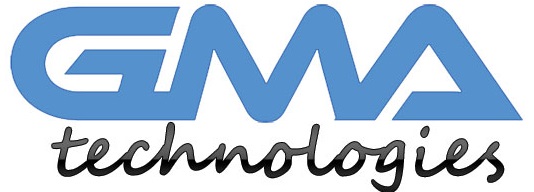The landscape of marketing is rapidly evolving, and one trend that continues to gain momentum is influencer marketing. As we move toward 2025, brands are recognizing the power and reach of social media influencers in connecting with their target audiences. With more consumers turning to trusted voices for recommendations, it’s no surprise that companies are re-evaluating how they allocate budgets for this dynamic channel.
As businesses gear up for the new year, understanding influencer marketing budgets becomes crucial. It’s not just about spending money; it’s about investing wisely in relationships that resonate with customers. This blog will explore how brands can effectively navigate their influencer marketing strategies while maximizing ROI and building authentic connections. Get ready to dive into what’s shaping the future of brand engagement!
The Rise of Influencer Marketing
Influencer marketing has skyrocketed in recent years, transforming the way brands connect with consumers. Social media platforms have become bustling marketplaces, filled with voices that resonate deeply with niche audiences.
Today’s consumers crave authenticity and relatability. They seek out influencers who share their values and interests. This shift has prompted brands to pivot from traditional advertising methods toward more engaging partnerships.
With over 3 billion people using social media worldwide, influencers hold tremendous power to sway purchasing decisions. Many followers trust these individuals more than they do brand advertisements or celebrity endorsements.
As a result, businesses are investing heavily in influencer collaborations. The strategy not only enhances visibility but also fosters genuine relationships between brands and potential customers. In this evolving landscape, understanding how to leverage influencer marketing effectively is key for success as we approach 2025.
How Brands are Allocating Budgets for Influencer Marketing in 2025
As brands prepare for 2025, influencer marketing budgets are undergoing significant shifts. Companies are increasingly recognizing the value of authentic connections that influencers create with their audiences.
A growing number of businesses allocate a larger portion of their digital marketing budget to influencer partnerships. This trend reflects a broader understanding of consumer behavior and engagement metrics.
Micro-influencers are capturing attention as well. Brands often find them to be cost-effective while maintaining high engagement rates. This strategy allows companies to reach niche markets effectively.
Moreover, there’s an uptick in using data analytics tools for budget allocation decisions. By analyzing past campaign performances, brands can make informed investments in influencers who align closely with their target demographics.
Experimentation is also on the rise, with some brands setting aside funds specifically for innovative collaborations or emerging platforms. As the landscape evolves, flexibility in budgeting will be key to maximizing ROI from these campaigns.
The Benefits of Investing in Influencer Marketing
Investing in influencer marketing opens doors to authentic connections. Influencers have built trust with their followers, making them powerful advocates for brands.
When a trusted figure endorses your product, it resonates more than traditional ads. This organic reach can lead to higher engagement and conversion rates.
Moreover, influencer partnerships often bring fresh content ideas. Collaborating with creative minds allows brands to showcase products in innovative ways that captivate audiences.
Additionally, tapping into niche influencers can help you target specific demographics effectively. Brands can reach audiences they may not engage through conventional channels.
The scalability of influencer marketing is appealing. Whether you’re a startup or an established brand, there’s flexibility in budgets and campaign size that suits various needs and goals.
Choosing the Right Influencers for Your Brand
Selecting the right influencers is crucial for any effective campaign. Brands should focus on finding individuals whose values align with their own. Authenticity matters, as followers can easily spot inauthentic endorsements.
Consider audience demographics too. An influencer with a smaller but engaged following may yield better results than one boasting millions of passive viewers. Engagement rates provide insight into how well an influencer connects with their audience.
Don’t overlook niche influencers. They often have dedicated communities that trust their recommendations more deeply than those from mainstream figures. It’s about quality over quantity in many cases.
Evaluate previous collaborations to gauge success and style compatibility. Look for creativity and originality; these traits can elevate your brand’s message beyond mere advertising.
Foster long-term relationships rather than one-off campaigns whenever possible. This builds credibility and strengthens brand loyalty among consumers who appreciate consistency and authenticity in messaging.
Measuring the Success of Influencer Campaigns
Measuring the success of influencer campaigns can feel daunting, but it’s essential for understanding ROI. Start by defining specific goals. Are you looking to increase brand awareness or drive sales?
Engagement metrics are a key indicator. Look at likes, shares, and comments on posts featuring your brand. They provide immediate feedback on how well your message resonates.
Website traffic is another important metric. Use tools like Google Analytics to track visitors coming from influencer links or promo codes.
Don’t forget about conversions! Monitor how many users take action after interacting with an influencer’s content. This could be signing up for a newsletter or making a purchase.
Qualitative data matters too. Gather audience sentiment through surveys or social listening tools to gauge perceptions around your campaign and influencers involved. This multi-faceted approach provides a clearer picture of what works and what doesn’t in influencer marketing budgets.
Transparency and FTC Regulations: What Brands Need to Know
Transparency is vital in influencer marketing. Brands must ensure that their partnerships are clear and honest. Consumers appreciate knowing when influencers promote products for compensation.
The Federal Trade Commission (FTC) has established guidelines to maintain this transparency. Influencers should disclose any sponsored content, using hashtags like #ad or #sponsored. This builds trust with followers and protects the brand’s reputation.
Brands also need to educate influencers about these regulations. An informed influencer can navigate FTC rules better, ensuring compliance while creating authentic content.
Failure to adhere to these guidelines can lead to penalties for both brands and influencers. It’s essential for marketers to stay updated on changes in regulations as they evolve over time.
By prioritizing transparency, brands foster a positive image within their target audience, paving the way for long-term loyalty and engagement.
Conclusion: Why Brands Should Consider Investing in Influencer Marketing for 2025 Budgets
As we move towards 2025, the importance of influencer marketing is more apparent than ever. Brands that recognize this trend and allocate their budgets effectively stand to gain a significant competitive edge. The digital landscape continues to evolve, and consumers increasingly turn to influencers for authentic recommendations.
Investing in influencer marketing not only enhances brand visibility but also fosters trust among potential customers. With the right strategy, brands can connect with niche audiences through tailored messaging delivered by credible voices.
Choosing suitable influencers who align with your values ensures a genuine connection with your target market. Moreover, measuring success through clear metrics allows brands to refine their approach continuously.
Understanding transparency and adhering to FTC regulations will further build credibility within campaigns. This attention to ethics creates stronger relationships between brands and consumers.
For those looking ahead at their 2025 budgeting needs, integrating influencer marketing into your strategy could be highly advantageous. Embracing this dynamic form of advertising may just set you apart from competitors while driving meaningful engagement and conversions.

